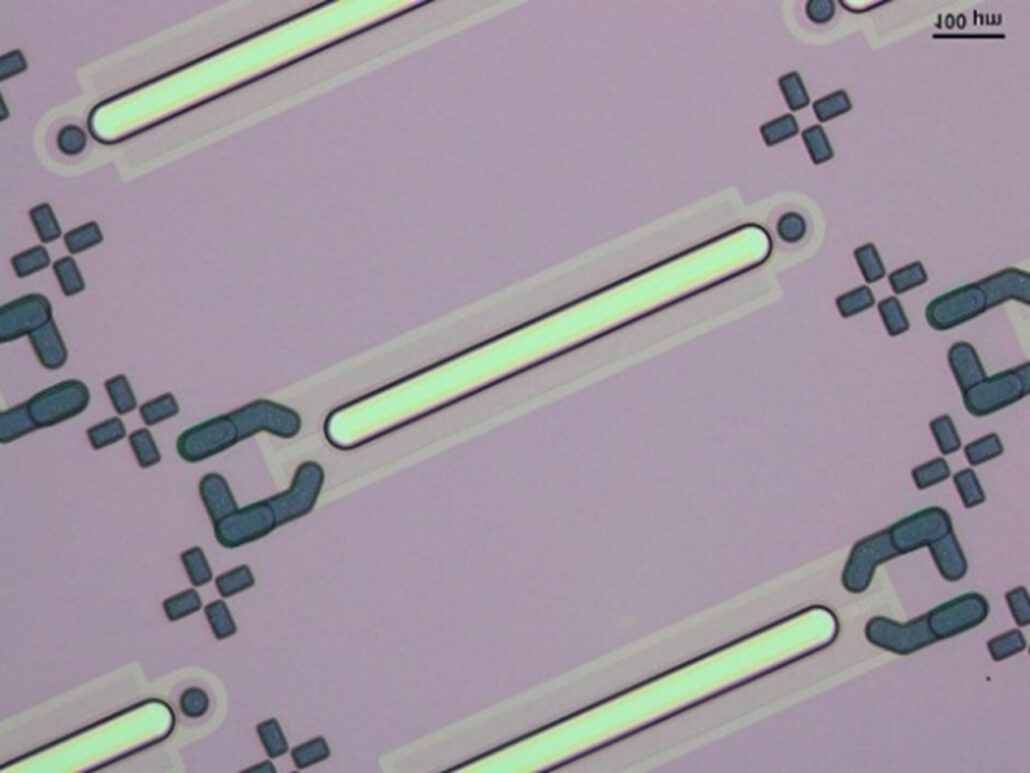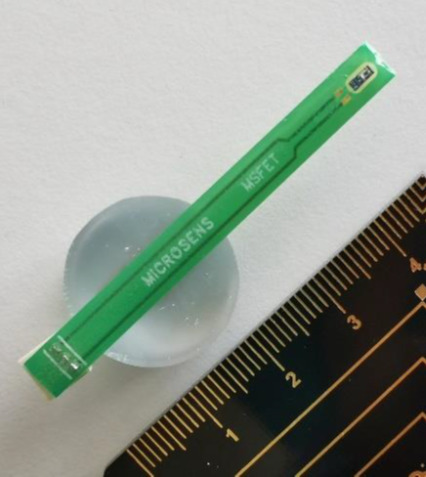MICROSENS – pH sensors with ISFET chips
LioniX is an OEM supplier of bare Ion Sensitive Field-Effect Transistor (ISFET) chips.
With our bare ISFET dies as a foundation, the possibilities for sensor development are vast. Whether you’re aiming to create a pH sensor or an ion sensor, our ISFET process provides a solid framework. While the process itself remains fixed, the design could be customized to meet the requirements posed by your probe design or any packaging constraints you may encounter.

MEMS pH sensor based on custom ISFET developed by LioniX International.
Besides providing bare ISFET dies, we partner with Microsens for creating pH sensors. Microsens provide an evaluation kit which contains some packaged ISFET probes, a miniature reference electrode and readout/drive electronics. It is plug-and-play and therefore requires no further development from your side.
For small volumes and/or evaluation of the ISFET for customer-specific use cases it is recommended to evaluate the Microsens evaluation kit before developing your own application based on our OEM chips. Take a look at Microsens evaluation kit.

A packaged ISFET.
ISFET DEVELOPMENT AT LIONIX INTERNATIONAL
Our ISFET chips are characterized by high sensitivity, low drift, and low light sensitivity, based on ion implantation, gate oxidation, diffusion, and a tantalum oxide (Ta2O5) gate material. The device is customizable and uncalibrated, allowing for full access to the sensor.
We fabricated miniature ISFETs with backside contacts to be used in a guidewire tip inserted into the brain vasculature of patients suffering from stroke. Read more about it here.
✅ Frequently asked questions (FAQ)
What is an ISFET?
The Ion Sensitive Field Effect Transistor (ISFET) is a solid state, potentiometric sensor capable of measuring pH in the range of pH 1 to pH 14 with a linear response.
How to turn bare ISFET into pH sensors?
To turn bare ISFET dies into working pH sensor systems, you need to add the following yourself:
- Packaging of the chip (mounting on a substrate or in a probe, electrical contracting and sealing the chip exposing only the ISFET gate to the liquid)
- External Reference Electrode
- Readout and control electronics
Bare ISFET chips are usually interesting for larger volumes and customers that have the above expertise and are willing to bear the associated development costs. This development requires in-depth knowledge about the ISFET principles.
Does LioniX supply pH sensors?
No, we only supply the bare ISFET chips.
What is the minimum order quantity?
Minimum quantity of the bare ISFET chips is 1 wafer, which equals approximately 100 – 2000 chips, depending on the design, which is customizable
